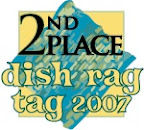Before this year, the process of figuring out which subset of our applicants we're going to invite to on-campus interviews went like this. The two administrators -- the dean and I -- reviewed applications as they came in. One or the other of us looked at each application; if either felt the need for a second opinion, we ran it by the other. The rest of the faculty was brought in for the interview evaluations, and that was work enough for all of us.
But when we did strategic planning this past summer, one of our goals was to involve the faculty in all stages of the admissions process. So this year we've brought the rest of the faculty in on the screening of applicants before inviting them to be interviewed.
I'm playing both roles right now; I evaluate every fifth or sixth application that comes in, and I also look at every application at the administrative review level. We're all used to seeing the whole application picture after the interview and making recommendations based on however each of us individually preferred to weight the components. But now the faculty are seeing only the two essays and a few quantitative pieces -- ACT, GPA, class rank -- during their prescreening pass. I've come to understand my role at that stage as quantifying the parts of the application that don't come with numbers already attached: essay content, writing proficiency, evidence of fit. I also have a chance to add comments and give an up-or-down recommendation on whether to invite the applicant to an interview.
Then when the application comes to me as an administrator, I have a different job. I reread the essays and look at the quantification done by the faculty member. I read the comments and consider the up-or-down recommendation. Then I read the recommendation submitted by a high school teacher or counselor. And then I try to place the applicant and the faculty input into the larger context of the whole applicant pool. What factors speak most strongly in favor of or against a certain decision? How should mitigating factors be considered?
Then I say yes or no to interview. But even that's not the end. My fellow administrator makes his own independent review of everything, and says yes or no. If we agree, that's the end. But if we disagree, we have to discuss the application until we come to consensus.
That's a lot more involved than the process was before. More people, more information, more evaluation, more opinions. Now, we knew when we set this up that we wanted that greater faculty input, and we knew we wanted to exercise independent judgment at different levels. But it wasn't entirely clear what the job of faculty doing the initial screening was (to look at everything except the yet-to-come interview data? but that interview data was often crucial in making a recommendation!), and how the job of the administrators differed (on what grounds would we ever disagree with the faculty up-or-down vote?).
And yet over the past four weeks, working our way through eighty-some-odd applicants so far, I've come to some important realizations about how the process should work, and what the various elements in it should provide on the route toward a final decision. I've also been energized every day by reading applications in my faculty role and my administrator role, looking at different elements depending on what hat I have on, and trusting that I'm not the only or the final word. I've been forced to think every day about what characteristics in applicants make them desirable or constitute warning signs, about how various factors should be weighted in each case. And that's been a creative and illuminating process. It's fraught with danger, of course; already we've heard from a few applicants who disagreed with the result. But I'm happy to take those risks because it teaches me more about what kind of educational program I'm helping to shape.
I'm not sure I could have figured that all out ahead of time. So I'm grateful to have the chance to learn by doing.





No comments:
Post a Comment